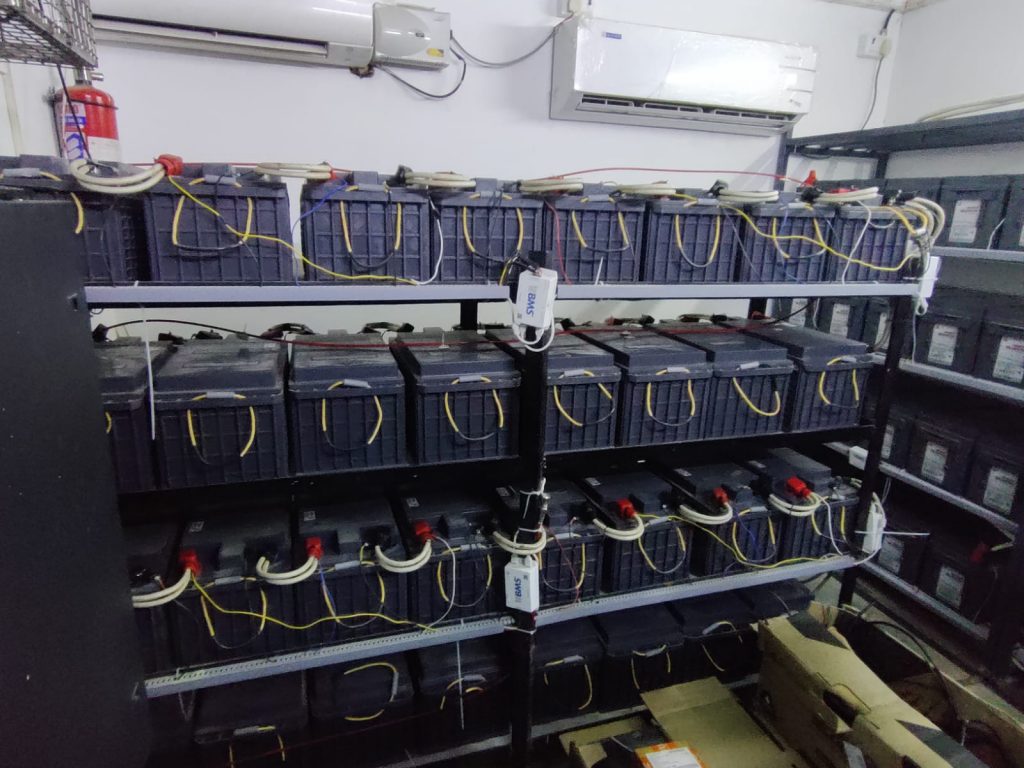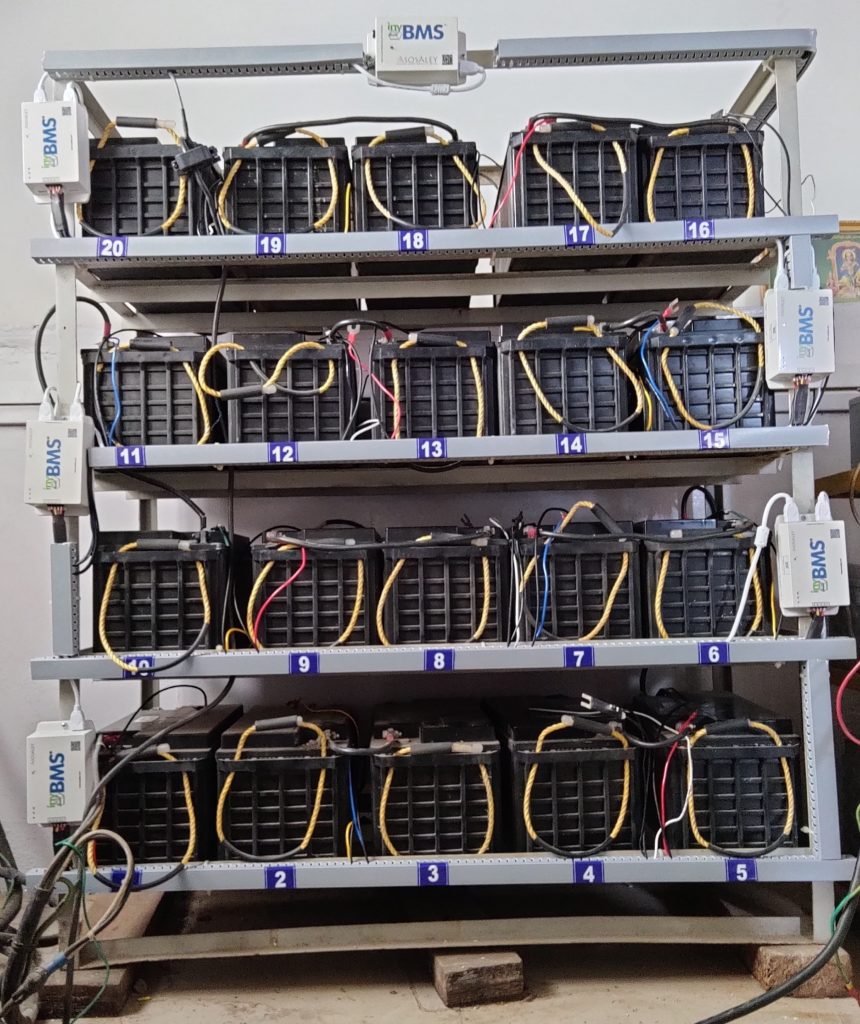
Batteries are critical components of literally every electrical and electronic device we use. Batteries store energy in chemicals and, when needed, deliver electrical energy. Different chemical compounds are used to store energy.
Every battery has three more elements – an anode, a cathode, and an electrolyte. Together, they form the primary building blocks of the battery.
Some of the popular and common elements used for storing energy in batteries are:
- Lead-Acid
- Nickle-Cadmium
- Nickle-Metal-Hydride
- Lithium-Ion
- Sodium-Ion
- Vanadium-Flow
- Aluminum-Air
- Lithium-Air
- Zinc-Bromine
- Carbon-Ion
- Graphene
Just like every device made by man, batteries do have a limited life span. Many factors, including how they are used, affect the life of a battery. In this article, we will list all these factors and discuss ways of maximizing the life of a battery.
Battery Monitoring/Management System
Most of us consider batteries to be fit and forgettable. Whether it is the car battery, batteries on our remotes, clocks and watches, torchlights, inverters, or UPS, we start worrying only when the device starts misbehaving or stops working. Even in a car, most of us don’t even look at the battery indicator on the dashboard and are surprised when, one day, the starter does not turn.
A battery monitoring/management system, on the other hand, watches the battery 24/7, reading data from measurable parameters of the battery. Then, using formulas standardized by the IEEE, it calculates and predicts the life of the battery. The critical task of any BMS is to warn the user of a potential breakdown.
State of Health (SOH)
A battery manufacturer defines certain specifications for the battery’s usage and life under ideal conditions. This starts reducing the time until the battery is put to use. This usage and life are termed as State of Health (SOH) and are a measure of the battery’s usability and life. SOH’s unit of measurement is the percentage (0–100%).
Once a battery is deployed, the BMS can measure certain parameters and calculate the SOH. It is important to remember that the SOH calculation is always an approximation. The parameters that can be measured to arrive at SOH are the following:
- The capacity of the battery (Ah)
- Voltage (V)
- Internal resistance/impedance/conductance
- Number of Cycles (charge-discharge cycle count)
- The terminal temperature of the battery
- Ambient temperature
- State of charge and depth of discharge
- Charging and discharging rate


Other factors that may also affect SOH are self-discharge, ability to accept a charge, age of the battery, temperature of the battery during its previous uses, and total energy charged and discharged.
We will now discuss each one of the eight parameters listed above. You may wonder what each of these parameters has to do with each other. Independently, maybe, nothing. But inside the battery, these parameters depend on each other for the proper functioning of the battery. If one parameter fails, it pushes all the others into collapsing like dominoes.
Battery Capacity (Ah)
Battery capacity is the amount of energy that is stored and can be extracted when needed. Energy, in turn, is the amount of electrical charge that can flow between two points. In electrical circuits, this charge is often carried by electrons moving through a wire.
Battery capacity is measured in ampere-hours, or ‘Ah’. Ah measures the electromagnetic force between the conductors that carry the electric current. Electric current is the rate at which electric charge flows past a point.
In a battery, the capacity is subject to the nature of the chemicals that are used, the quality of the materials used, and other factors. When the health of the battery starts to deteriorate, the capacity of the battery to deliver its stated ampere-hours will certainly fall.
Voltage
The difference in electric potential between two points is called the voltage. The difference is generally defined as the work needed per unit of charge to move a test charge between the two points. The derived unit for voltage is named ‘volt’. In the International System of Units, 1 volt = 1 joule (of work) per 1 coulomb (of charge). More commonly, the definition for volt uses power and current, where 1 volt = 1 watt (of power) per 1 ampere (of current). This has more relevance to our discussion.
In batteries, a voltage represents either a source of energy (electromotive force), used energy, or stored energy (potential drop).
Internal Resistance of the Battery
The internal resistance of the battery is the mathematical sum of electronic resistance (due to metal covers, internal components, and how the metals are in contact with each other) and ionic resistance (due to the resistance offered by the electrolyte to the flow of charged particles). Whenever this sum exceeds the threshold limits specified by the manufacturers, then the health of the battery starts to deteriorate.
Number of Charge-Discharge Cycles
In an ideal situation, one cycle of 100% charging and one cycle of 100% discharging are considered to be one cycle of the battery.
For improved battery lifetime, it is often advised to charge the battery until just 80% and not discharge it below 20%. Such cycle counts are dependent on the battery manufacturer and the type of application the battery is subjected to.
The battery’s life is generally quantified in charge/discharge cycles by the manufacturer, and after undergoing a certain percentage of this defined number of cycles, the battery’s health starts to deteriorate.
Terminal Temperatures
Batteries are supposed to be operated in environments that are defined by the manufacturer. The specifications include ambient temperature as well as the temperature at the terminals. For every increase of 1 degree, the capacity of the battery can degrade by 2–5%. The terminal temperature is the first indicator of potential anomalies inside the battery. This particular parameter has to be very carefully watched.
Ambient Temperature
The table on charging and discharging temperatures since the operation of a battery is based on chemical reactions, the temperature at which the battery operates as well as the temperature at which it is charged are critical. Temperatures that are excessively higher than what is specified could even change the chemical reaction. Similarly, extreme cold could hamper the chemical reaction, and the battery may not be able to deliver any charge. This is what happens when you try to start a car after a very cold night.
State of Charge & Depth of Discharge
According to IEEE 1881, the State of Charge (SOC) is defined as the remaining capacity in a battery expressed as a percentage of its full charge capacity.
The depth of discharge is estimated from the state of charge. In other words, SOC = 1 minus DOD. Watching SOC and DOD and analyzing their movement over time will provide more reliable indications of the SOH of the battery.
Charging and Discharging Rate
Pure lead thin plate starting batteries can be charged the fastest, up to 100% of their rated capacity. But, that is a rare exception. For most lead-acid batteries, you should set the charge current between 3-10% of the battery capacity. If your battery is rated at 50Ah, the charging current should not be less than 1.5 amperes and never more than 5 amperes. Following this rule will extend the life of your battery.
Similarly, the discharge rate should be maintained at the optimum limits so that no over-discharging takes place. Over-discharging degrades the capacity of the battery which ultimately leads to the deterioration in the health of the battery.
Conclusion
A BMS measures as many of these factors as possible and arrives at the state of health of the battery.
Understanding the SoH of a battery is critical. Take the example of a large battery bank used to power an emergency UPS system. If one battery starts failing, it will have a cascading effect on nearly all the batteries. If one battery is delivering at say, 10% of its stated capacity, the UPS system will simply make up for the loss by over-discharging another battery.
This situation when left unnoticed will gradually spread and destroy the entire battery bank.
Sosaley’s Battery Health Monitoring System [BHMS] is designed just to avoid a situation like this. Today it is watching 1000s of batteries in a large number of UPS systems. Next time you get fresh milk at home in the morning, remember to thank Sosaley BHMS. It ensures that the freezers that are used to store the milk are never down for even a second.